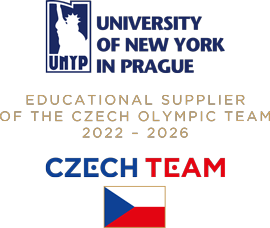Researching soil in Ethiopia can predict migration and conflicts

For a long time, Africa has been a major focus of my research. My research interests include, inter alia, the modern and contemporary history and politics of Ethiopia, with particular attention to nation-building, nationalism, ethnic identity, ethnic federalism and related issues, the issue of conflicts in Sub-Saharan Africa, Euro-African relations, and Czechoslovak-African relations.
Recently, I became involved in the study of migration. It is exactly this issue that has brought me to Ethiopia again, within the project of the Czech Geological Survey, which covers the whole of Ethiopia for the use of the Ethiopian government and the benefit of the local people. Why should this be so? One major reason behind migration from Africa is climate change, and environmental change in general. Our understanding of local conditions of interaction between soil and society can help us understand and predict which locations will have a greater potential for migration, conflicts over land and water, and many other factors and consequences that are interlinked in one way or another.
My role in the project, particularly in the Sidama region and the Gamo zone of the Southern Nations, Nationalities and Peoples’ region (SNNPR) has been to cover and monitor interactions between society and the environment, land use, processes of social change, etc. Our main areas of research were the Dorze area in the Gamo Zone, not far from Arba Minch, as well as the Sidama region and the city of Hawassa, the capital of SNNPR.
What is the benefit of this project? A complex understanding of the interlinks between society and the environment can help local government to predict (for instance) where there is a potential for serious erosion, which in turn may result in land and water conflicts, as well as migration from rural to urban places. At the same time, such a large-scale survey may help to plant the process of urbanization, and the development of infrastructural projects.
Erosion is now a huge issue in many African countries. For example, Madagascar is facing enormous troubles due to deforestation and subsequent erosions and floods. Such projects may be of significant help in minimizing the negative consequences of inappropriate urban planning, or inappropriate land use in areas where there is a potential for massive erosion. My role in this particular project is rather minimal, but at the same time, the historical, cultural and social aspects of the use of the environment are part of a broader understanding of the geological and ecological aspects under examination.
Moreover, cooperation between the natural and social sciences is one of the major priorities of the new Horizon Europe scheme for 2021-2027. As I have tried to show, a topic such as migration requires large-scale cross-disciplinary cooperation to achieve a full picture of the phenomenon being studied. Finally, one of the many desirable outcomes of this project has been a close cooperation in education and science between European and African institutions of higher education.

Jan Záhořík
Related Articles
UNYP Chronicle Newsletter
The e-mail address you provide will be used only to send you the newsletter. Your privacy is important to us.
For more information download our UNYP Brochure.

Contacts
University of New York in Prague
Londýnská 41, 120 00 Praha
ID no: 25676598
Phone:
+420 224 221 261
![]() Skype
Skype
Email: unyp@unyp.cz







